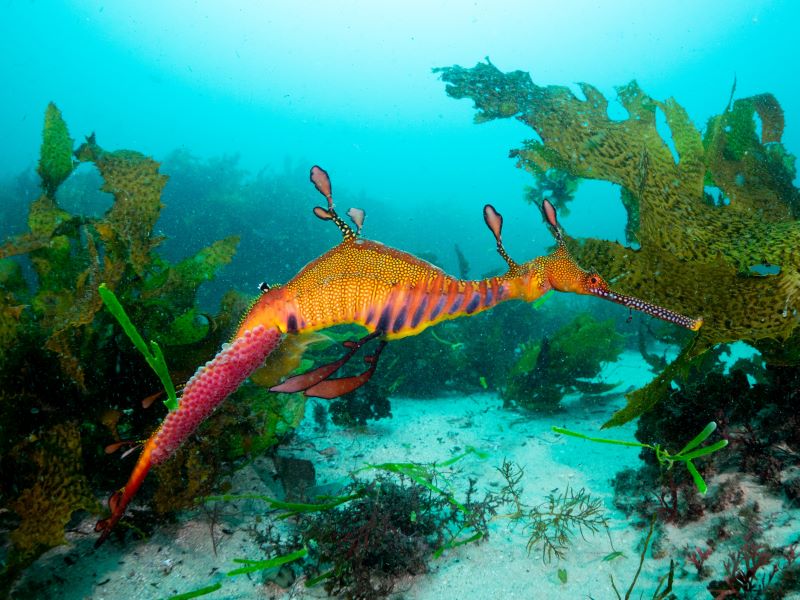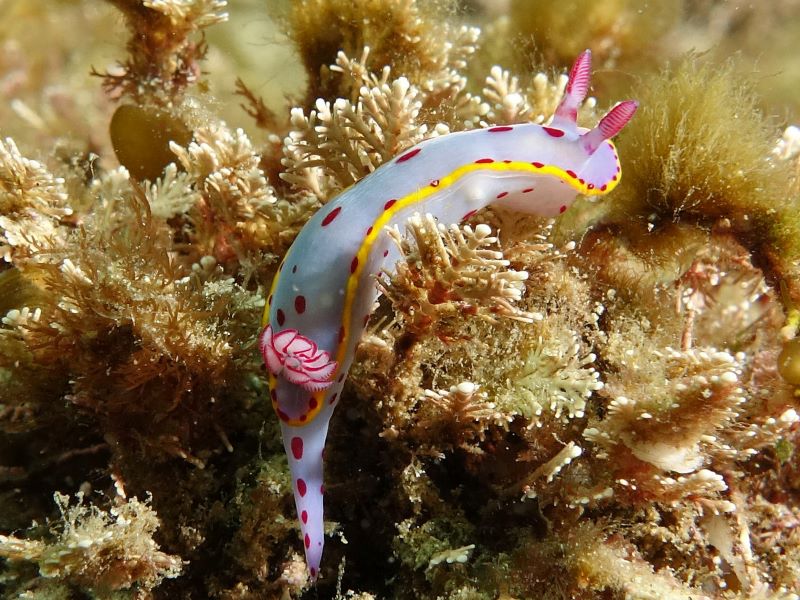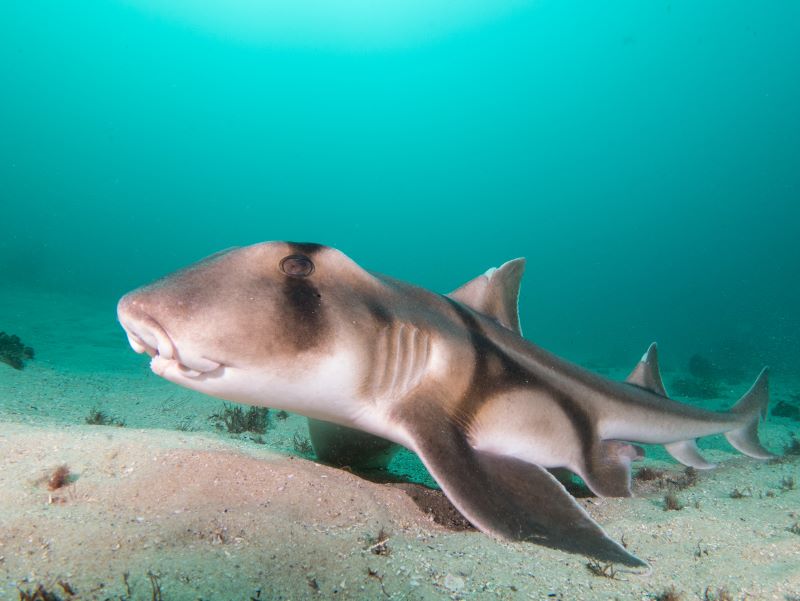

Meet some of the locals

Weedy seadragon
The weedy or common seadragon (Phyllopteryx taeniolatus) is protected and can be found in kelp or seagrass habitats. The edge between kelp forests and sand is the preferred feeding ground for food such as mysid shrimp and other small crustacea. The males carry the eggs under the tail until they hatch.
Image courtesy John Turnbull

Eastern blue groper
Eastern blue groper (Achoerodus viridis) is found in a wide range of habitats in the aquatic reserve. The male is a vivid blue, while females are brown to reddish-brown and juveniles brown to green. Their diet includes crabs, prawns, shellfish and sea urchins. This blue groper is actually a species of wrasse rather than a 'grouper'.
Image courtesy William Gladstone

Giant Australian cuttlefish
The Giant Australian cuttlefish (Sepia apama) is the world’s largest, growing to 60 cm long and over 5 kg. They can change colour in an instant to imitate rocks, sand or seaweed using cells known as chromatophores. Cuttlefish are highly intelligent, and they have blue blood, 3 hearts and 10 tentacles including 2 specialised hunting tentacles. They eat fishes, crustacea and octopuses.
Image courtesy William Gladstone

Splendid nudibranch
A nudibranch (Goniobranchus splendidus) is like a snail without a shell but with sophisticated defence mechanisms. The common name ‘nudibranch’ refers to their naked or exposed gills. They are carnivorous, feeding on sponges and sea anemones. Many nudibranchs are brightly coloured and are a favourite of scuba divers.
Image courtesy John Turnbull

Spotted wobbegong
Spotted wobbegong (Orectolobus maculatus) can be found lying on the sand or rocky reef or hiding under rock ledges. They can be identified by the skin flaps around their snout and a pattern of dark saddles and white rings. They feed mainly at night and eat fishes, crayfishes, crabs and octopuses.
Image courtesy John Turnbull

Common Sydney octopus
The common Sydney octopus, or gloomy octopus, (Octopus tetricus) is found on rocky reef and soft-sediment habitats. During the day they hide in a lair of rock rubble and the discarded shells of their prey. At night they emerge to feed on crabs and molluscs using their sharp beak. They can change their shape and the colour of their skin to imitate seaweed.
Image courtesy John Turnbull

Sea tulip
A sea tulip is a type of ascidian which grows on rock in the sponge garden. The colour of the sea tulip, whether it be pink, orange, purple or yellow, is caused by an encrusting sponge, Halisarca australiensis. The sea tulip and the sponge are both filter feeders, extracting plankton from the water.
Image courtesy John Turnbull

Port Jackson shark
The Port Jackson shark (Heterodontus portusjacksoni) is found in the reserve during winter in rocky or sandy areas and sometimes in seagrass. They hunt for food at night, eating sea urchins, molluscs, crustacea and fishes. Their teeth are designed to seize and hold active prey and to crush and grind the shells of their prey. The female lays eggs with a brown spiral case into rock crevices. Young sharks emerge 10-12 months later.
Image courtesy John Turnbull

Six-spine leatherjacket
The male six-spine leatherjacket (Meuschenia freycineti) is blue with yellow blotches whereas the female is light green, yellow or brown. They can be found across a variety of habitats including kelp, barrens and sponge garden. They feed on algae and invertebrates.
Image courtesy William Gladstone
More information
- Weedy seadragon (nsw.gov.au)
- Eastern Blue Groper, Achoerodus viridis (Steindachner, 1866) - The Australian Museum
- Giant Cuttlefish - The Australian Museum
- Spotted Wobbegong, Orectolobus maculatus (Bonnaterre, 1788) - The Australian Museum
- Common Sydney Octopus - Octopus tetricus (australian.museum)
- Sea Tulip - The Australian Museum
- Port Jackson Shark, Heterodontus portusjacksoni (Meyer, 1793) - The Australian Museum
- Sixspine Leatherjacket, Meuschenia freycineti (Quoy & Gaimard, 1824) - The Australian Museum

